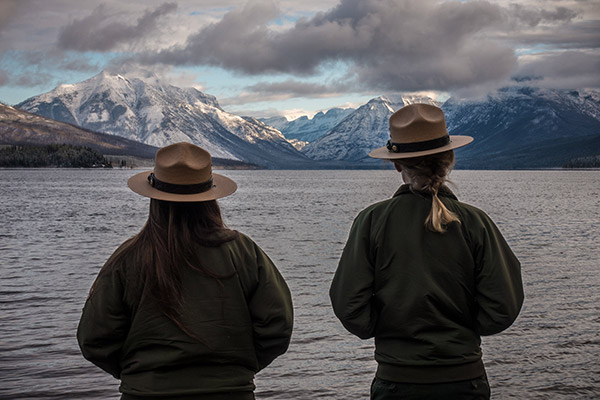Last updated: December 31, 2020
Lesson Plan
Create a National Park

- Grade Level:
- Middle School: Sixth Grade through Eighth Grade
- Subject:
- Science,Social Studies
- Lesson Duration:
- 60 Minutes
- Additional Standards:
- NGSS 5-ESS3-1. Obtain and combine information about ways individual communities use science ideas to protect the Earth’s resources and environment.
Essential Question
What are the purpose of national parks? Why do we need national parks?
Objective
Students will be able to:
1. Answer the question: Why do we need national parks?
2. Describe characteristics of a national park.
3. List three problems facing national parks.
4. Analyze the information learned and write a persuasive proposal for a national park designation.
Background
There are over 400 national park areas in the National Park System. They have been set aside by Congress to preserve and protect the best of our natural, recreational, and cultural resources for the use and enjoyment of all persons, including future generations. For this lesson, we will be discussing parks set aside for their natural wonders. These parks are as diverse as the visitors who come to them. A park may offer any one or a combination of the following: camping, wilderness, hiking trails, scenic overlooks, nature trails, campfire programs, boat tours, canoeing, fishing, boardwalks, rock climbing, swimming, or tours of historic buildings and cultural sites.
A park may have several outstanding natural features for which it was set aside, or it may be preserved for a specific site. Park management is set up much like a school system, the rangers being the teachers. Each day brings new challenges to a park and its resources. Some parks may have numerous problems facing them.
Upon arriving at many of the national parks, the visitor pays a small entrance fee and is handed park information outlining major resources and sites to visit. Larger parks have a visitor center where rangers disperse information about the park. One part of a park ranger’s job is to interpret the park resources and problems to the visitors so that they can understand the concerns of the park. Why? Because parks belong to the people and they must learn about these valuable resources and how to protect them!
Preparation
For each pair of students:
- Clipboard
- Paper, pencil
- Hand lens
- String (15 ft. long)
- Six popsicle sticks
- Poker chips (at least one per student)
Procedure
- Discuss the concept of a national park with your students. Ask students if they have ever been to a national park. What makes it different from a state park or a county park?
- Ask students what they would like in a national park, if they were to create a “perfect park.” Why set up a national park? Who owns national parks?
- Pair off the students. Distribute the materials listed on the preceding page to each pair.
- Assign, or let each pair choose, an outdoor spot for their national park. Using their string, they should rope off the area.
- Students must move about their national park on hands and knees. Using the hand lenses, the students should choose the scenic values of their park; a hole might be a canyon, a rock might be a mountain, for instance. The popsicle sticks can be used to mark the trails or scenic spots.
- Give the class 20-25 minutes to set up the trails in their park. After the students have marked their parks, they must make a brochure (including a map) to publicize their park.
- Once the parks are ready for business, the “rangers” (the paired students) must advertise their park. They should advertise their park by shouting out its attributes. Ask the pairs to split up.
- One student in the pair should remain in the park to interpret it, while the second visits other national park. The students may then switch. The poker chips are the entrance fee needed to visit another national park. Every student must visit at least one national park.
- After they have visited the national parks, ask students the following questions: Did they have problems getting visitors to come to their park? Were visitors always careful with the parks’ resources?
- Did they have too many visitors? What would they change? What problems occurred?
- How would they raise money to improve the park’s facilities?
Extension
Write a proposal to get funding to buy a national park. Presentations should be made to the “President” (teacher). Show students how they can participate in the online “Web Ranger” program at www.nps.gov or in a national park “Jr. Ranger” program the next time their families visit a national park.
Vocabulary
Cultural resources, national park, natural resources.
Assessment Materials
Discuss why we should have national parks. What can you do to help protect the resources in a national park? Who has the responsibility of preserving and protecting the park for future generations?
